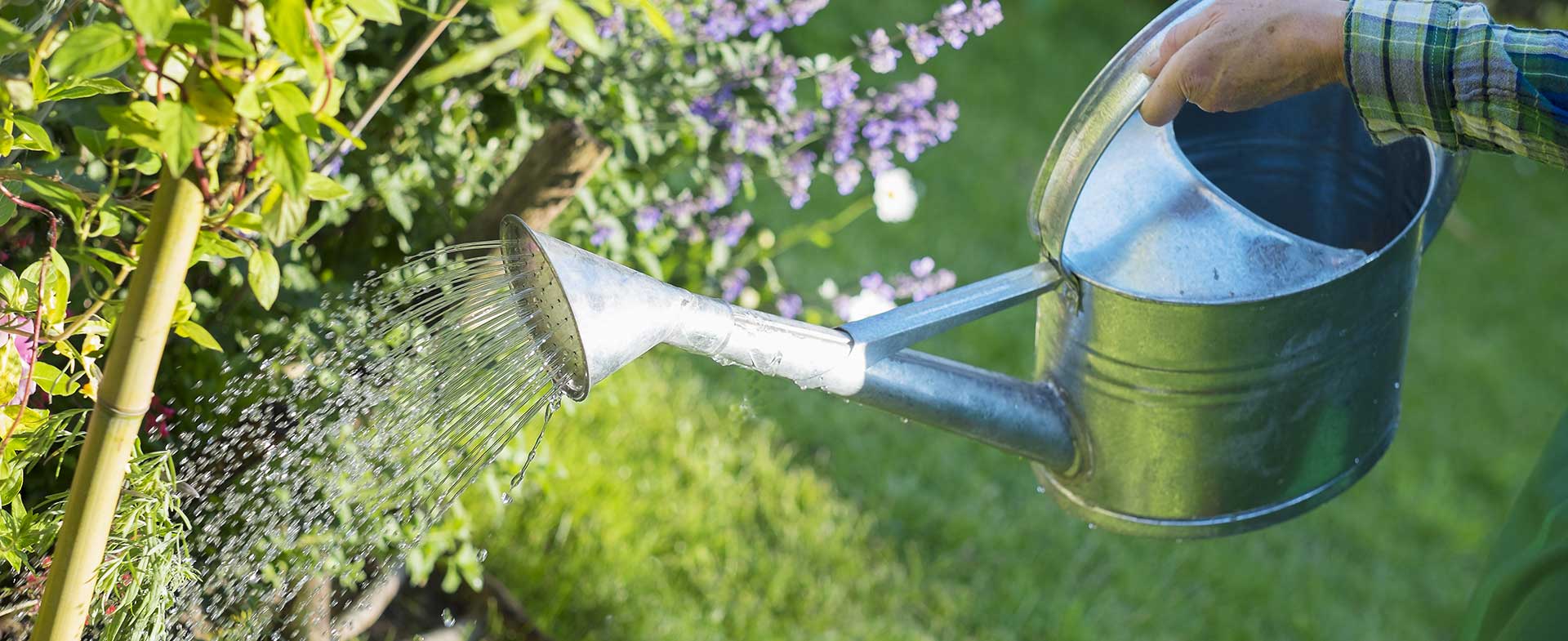Warm Winter Welcome: Protecting Garden Plants Successfully
Posted on 27/05/2025
Warm Winter Welcome: Protecting Garden Plants Successfully
As the weather shifts and the air grows colder, garden enthusiasts everywhere start to wonder how best to offer their plants a warm winter welcome. Cold snaps, frost, and dry spells can wreak havoc on your beloved foliage. But with the right knowledge and preparations, you can shield your garden from the harsh winter chill, ensuring a beautiful, healthy rebirth in spring. Join us as we dive deep into the best practices for protecting garden plants in winter successfully.
Why Winter Protection Matters for Your Garden
Gardens are living ecosystems, and winter can pose serious threats. Whether you're growing perennials, annuals, shrubs, or delicate ornamentals, understanding the impact of cold weather is essential. Frostbite, dehydration, and root damage are just a few of the potential problems. By adopting preventive measures now, you're giving your plants a hug against winter's chill, setting them up for vigorous growth when spring returns.
- Frost and Freeze: These phenomena can destroy plant tissues.
- Wind Desiccation: Cold winds dry out leaves and stems.
- Soil Erosion: Repeated freezing and thawing deeply damages roots.
- Pest and Disease Risk: Some pests overwinter and diseases thrive in wet, cold conditions.
Understanding Your Hardiness Zone
Before employing any winter protection strategy, it's crucial to identify your USDA hardiness zone. This classification indicates which plants are best suited for your region's typical lows, guiding you in both plant selection and the specific protection they require. Knowing your zone allows you to tailor your efforts for maximum effectiveness.

Essential Preparations for Winter-Proof Gardens
A warm winter welcome for garden plants starts long before the first snowflake falls. Preparation is key.
1. Clean Up Your Garden
Remove dead or diseased foliage, spent annuals, and fallen fruit. This reduces habitats for overwintering pests and diseases. Bag up or compost healthy clippings, but always destroy any material containing diseases or pests.
2. Mulching: Nature's Blanket
A thick layer of organic mulch acts as an insulating blanket, moderating soil temperature and retaining vital moisture through winter. Apply 2-4 inches of straw, chopped leaves, shredded bark, or compost around the base of your plants, avoiding direct contact with stems to prevent rot.
- Benefits of Mulching:
- Reduces temperature fluctuations
- Keeps roots moist
- Prevents soil erosion
- Enriches soil as it breaks down
3. Watering Wisely Before Freeze
Moist soil holds more heat than dry soil. In the days before a hard freeze, thoroughly water your garden, especially evergreens and new plantings. Take care not to overwater, and ensure good drainage to avoid root rot.
4. Bed Preparation for Delicate Plants
Tender perennials, bulbs, and new plantings benefit from extra protection:
- Move container plants indoors or to sheltered spots.
- Cover beds with frost cloths, burlap, or horticultural fleece.
- Use cloches, cold frames, or even upturned pots for especially vulnerable specimens.
How to Protect Different Types of Garden Plants in Winter
Perennials
Most perennials are built to handle cold, but young or fragile varieties might need a little help. After the ground freezes, mulch around the base, and consider staking taller species to prevent snow breakage.
Annuals
Most annuals will not survive frost, but you can prolong their lives by covering them on cold nights. Alternatively, dig them up and bring them indoors for winter blooming if conditions allow.
Shrubs and Trees
Newly planted or sensitive shrubs are at risk of winter burn. Wrap burlap around the trunks and branches, especially for types prone to wind damage. For young trees, trunk wraps prevent sunscald and hungry critters from causing harm.
Container Plants
Potted plants are more exposed to freezing than those in the ground. Move containers close to the house, bury them in mulch, or wrap them in bubble wrap and burlap for insulation.
Vegetable Gardens
Root crops and cold-hardy greens can keep producing through the winter with the aid of row covers, cold frames, or heavy mulch. Harvest any tender produce before frost strikes.
Easy Frost Protection Techniques for Gardeners
Frost protection doesn't have to be complicated. Here are some tried-and-true methods:
- Row Covers and Floating Fleece: Lightweight fabrics trap heat without smothering plants. Drape over crops in the evening and remove for sunshine in the morning.
- Garden Cloches: Use bell-shaped glass, plastic, or even cut-off milk jugs as mini-greenhouses for seedlings and tender annuals.
- Windbreaks: Erect a screen of burlap, snow fencing, or thick shrubbery to deflect chilling winds.
- Blanket or Sheet Protection: For emergency overnight frost, cover plants with old blankets or sheets, then remove at daybreak.
DIY Plant Protection Hacks
Looking for budget-friendly garden hacks? Try these creative ideas:
- Reuse Water Bottles: Fill with warm water and nestle among plants to radiate heat overnight.
- Make a Mini Greenhouse: Use clear plastic storage bins to cover plants in a pinch.
- Compost Heap Warmth: Plant near active compost piles, which give off natural heat in colder months.
Troubleshooting Common Winter Problems in the Garden
Winter Dieback
If stems look brown or mushy, prune back in spring to healthy growth. Most perennials will reemerge, but shrubs may need replacing if severe.
Fungal Diseases
Wet, cold weather fosters fungal issues. Remove and destroy infected plant debris, and ensure good airflow by spacing plants correctly.
Rodent Damage
Hungry mice and voles may gnaw stems and roots, particularly under mulch and snow. Set up wire mesh guards, and check mulch depth regularly to avoid creating inviting habitats.
Caring for Indoor and Houseplants in Winter
Bringing plants indoors? They need attention too!
- Light: Reduce direct sun exposure, but try to give at least 6-8 hours of indirect light.
- Water: Indoor plants use less water in winter; monitor soil moisture carefully.
- Humidity: Dry indoor air means misting or running a humidifier helps prevent leaf drop.
- Temperature: Avoid drafts and sudden temperature changes near windows.
Embracing Native and Cold-Hardy Plant Varieties
Selecting plants naturally adapted to your region is the ultimate way to offer a warm winter welcome to your garden. Native and cold-hardy varieties suffer fewer winter casualties and require less pampering.
Research which trees, shrubs, and perennials thrive in your climate--your local extension office or botanical garden is a great resource for recommendations. Some favorites include:
- Russian Sage
- Black-eyed Susan
- Hellebores
- Boxwood
- Dogwood
- Colorado Blue Spruce
The Beauty of Winter Interest Plants
Why not select plants that add charm and structure even while dormant? Ornamental grasses, evergreens, and shrubs with striking bark or berries offer visual delight throughout the colder months!
Long-Term Strategies: Building a Winter-Ready Landscape
Incorporating permanent design features into your garden will reward you season after season.
- Windbreak Plantings: Strategic rows of evergreens or fence panels.
- Plant Grouping: Cluster plants for mutual warmth and easier coverage.
- Raised Beds: These drain better, warm quicker, and reduce waterlogging.
- Pathways and Rockeries: Add hardscaping that absorbs sunlight and radiates it at night.
Adapting Your Care for Climate Change
Unpredictable winters mean rapid thaws, ice storms, and fluctuating temperatures. Stay flexible by monitoring weather patterns, choosing resilient species, and being prepared to cover vulnerable plants at short notice.

Winter Plant Protection FAQs
- When should I start winterizing my garden?
Begin cleanup and mulching in late fall, just as temperatures regularly dip below freezing. - How thick should my mulch layer be?
Typically 2-4 inches, depending on your local climate and plant types. - Can I use plastic for covering plants?
It can trap moisture and cause rot. If using plastic, ensure it doesn't touch foliage and remove it in the morning. - Should I prune before or after winter?
Most pruning is best done in late winter or early spring to reduce the risk of winter damage.
Conclusion: Welcome Winter Without Worry
A warm winter welcome for your garden plants doesn't require magic--just diligent, informed effort. By cleaning up, mulching, watering wisely, and using protective coverings, you can keep your plants snug and safe throughout the coldest months. Invest in understanding your garden's unique needs, and you'll be rewarded with a vibrant, healthy landscape come spring. Don't let winter catch you unprepared--embrace these protection strategies and let your garden thrive through the frost!
For more expert gardening tips, stay tuned to our updates and give your plants the care they deserve in every season. Here's to a garden that not only survives, but thrives--a true warm winter welcome for every leaf and bloom!

